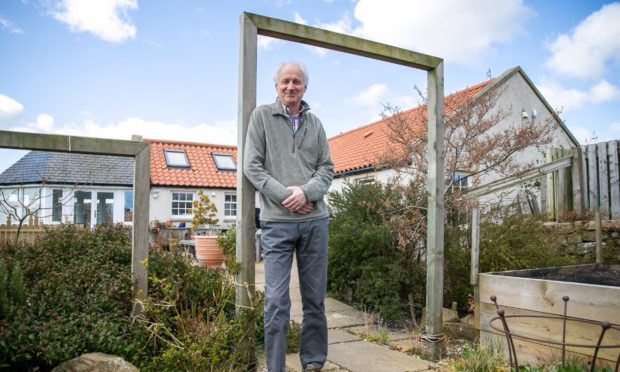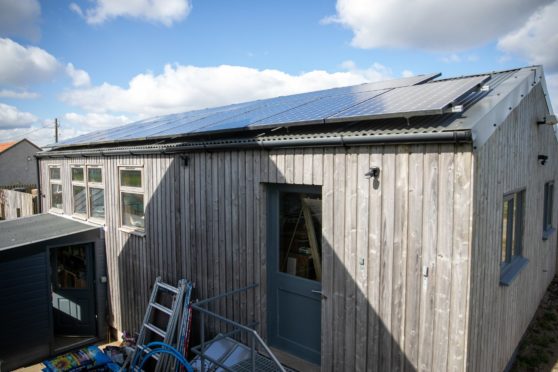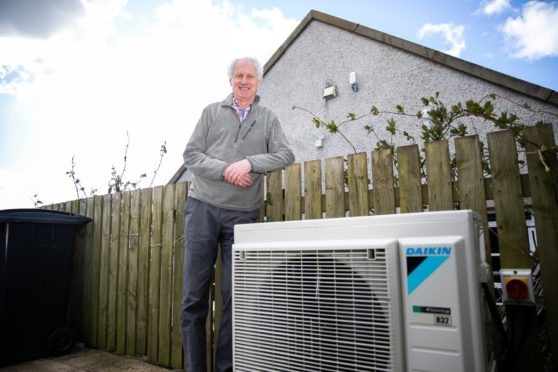Fife couple Pete and Niamh Day have cut their heating bills in half after refitting their 200-year-old Anstruther home to be more energy efficient.
The couple decided to plough nearly £20,000 into heating and energy efficiency improvements to their cottage on the outskirts of Anstruther, which was built in the 1800s.
Now, they have halved heating bills and are selling their surplus electricity.
Pete said: “It had to be completely gutted, so it’s now essentially a new house inside an old frame.”
“But it is possible to make the improvements needed to get old houses up to scratch.”
There is a renewed focus on energy efficiency and more environmentally friendly heating ahead of COP26 climate change talks coming to Scotland later this year.
How much work does a 200-year old cottage need?
The improvements at Rhidgeways Cottage, East Pitkierie, began before the Days bought the property about seven years ago.
The previous owner started work on the basics, such as insulation, on the property, which is about 200 years old.
When they took over, Pete and Niamh decided to go one step further than the previous owner and make their building run predominantly on renewable energy.
Pete said: “I’ve seen photos of how it was before and you can tell that it was really drafty and would have been expensive to heat.”
“While all the insulation was done when we moved in, the heating was run by two hot water boilers and that meant the bills were pretty expensive — we were spending about £4,000 a year on heating.
“The first thing we did was get some solar panels on the roof and then we looked at ways to make things more energy efficient by replacing the boilers.
“The previous owner’s work allowed us to be able to put a heat pump in place instead of the boilers and they have been a dream.
“On one hand, we wanted to cut down our energy bills but, on the other, we really wanted to make the home greener and better for the environment.”
A heat pump moves warm and cool air around a home in order to create a comfortable setting and uses far less energy to operate.
Is improving your home’s energy efficiency worth it?
The couple spent around £17,000 on all their upgrades — but the investment has since started paying for itself.
The two-bedroom cottage is now supplying electricity to the National Grid during the sunnier summer months and the home is considerably cheaper to heat.
“Our heating and electricity bills have at least halved since having the heat pump put in,” Pete added.
“We’d recommend everyone make their homes more energy efficient. As I understand it, people on mains gas do not save as much changing to a heat pump as we did, but when you consider the environmental aspect as well I would say it’s definitely worth going for.”
Aside from the financial and environmental benefits, Pete also said the changes have made the home more liveable.
“It is more comfortable now because we can run the heating full-time at a low temperature. If we had done that with the boiler it wouldn’t have been pretty.”
He added: “We are coming from one extreme and improving an old and inefficient home.
“It’s achievable to improve most homes if governments wake up and are forced to do something.”
Do I need to start making changes now?
A recent report by Scottish and Southern Electricity Networks found that more than half of Dundee houses need improvements in order to have at least an EPC C rating, which the Scottish Government wants all dwellings to have by 2040.
Holyrood does not currently intend to make improvements mandatory for private home owners.
Instead, it will “encourage uptake” of grants and work with local authorities on delivering improvement schemes.
However, this may change by 2030 with a recent Scottish Government report warning it may be necessary to “mandate action” by 2030.












